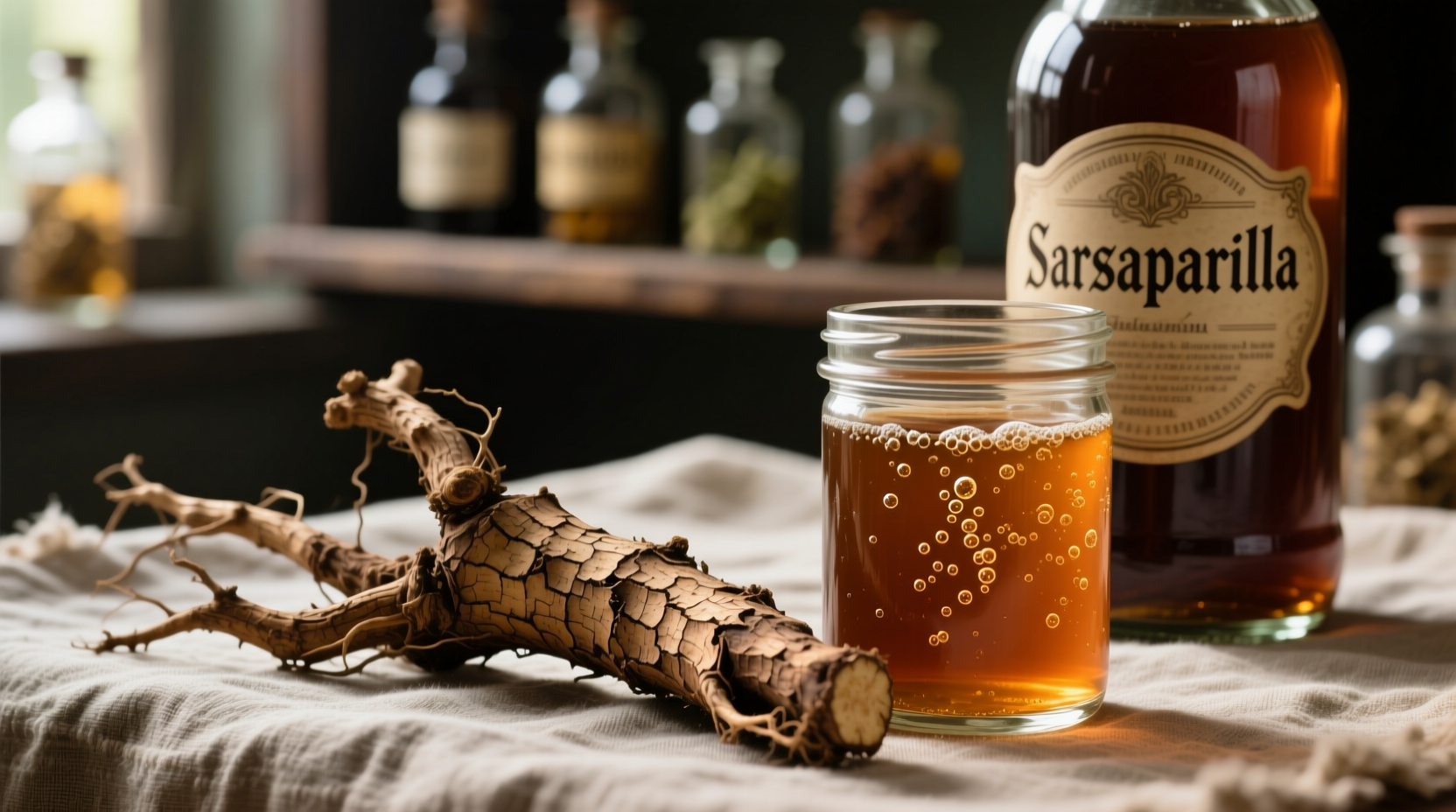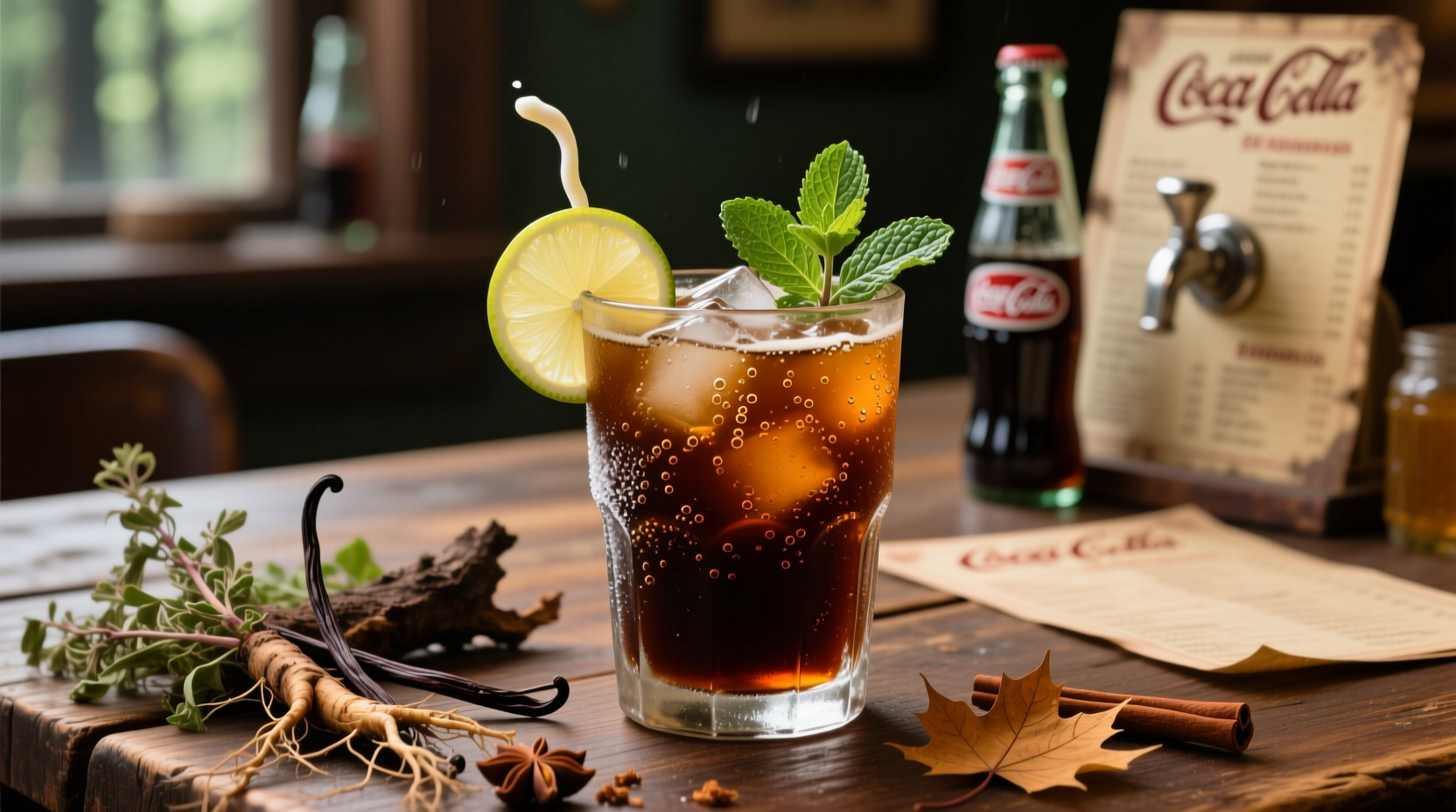Sarsaparilla has a distinctive earthy, sweet, and slightly woody flavor with prominent notes of wintergreen, licorice, and vanilla. Unlike modern root beer, authentic sarsaparilla delivers a more complex herbal profile with subtle bitterness from the Smilax ornata plant root, balanced by natural sweetness and warm spice undertones.
Curious about that vintage soda bottle label or historical reference to sarsaparilla? You're not alone. Many people encounter this traditional beverage in old Western films or specialty stores and wonder: what does sarsaparilla taste like compared to root beer? The answer reveals a fascinating flavor journey rooted in botanical history.
The Botanical Origin of Sarsaparilla Flavor
Sarsaparilla's unique taste originates from the Smilax ornata plant root, native to Central America and the Caribbean. Unlike commercial root beer which typically uses sassafras (banned by the FDA in 1960 due to safrole concerns), authentic sarsaparilla relies on this specific vine root as its primary flavor base. Historical records from early American apothecaries show sarsaparilla was originally brewed as a medicinal tonic before evolving into a popular soft drink.
When properly prepared, the root delivers a complex flavor profile that food historians describe as "nature's original root beer" - but with distinctive characteristics that set it apart. The taste experience unfolds in distinct phases:
- Initial impression: Sweet vanilla-like aroma with subtle wintergreen notes
- Middle palate: Earthy, woody base with mild licorice undertones
- Finish: Refreshing herbal bitterness balanced by natural sweetness
How Sarsaparilla Differs From Root Beer
Many consumers confuse sarsaparilla with root beer, but their flavor profiles differ significantly. While both belong to the "root beverage" category, they originate from different botanical sources and preparation methods. This comparison clarifies what real sarsaparilla tastes like versus commercial alternatives:
| Characteristic | Authentic Sarsaparilla | Modern Root Beer |
|---|---|---|
| Primary Flavor Base | Smilax ornata root | Sassafras substitute (safrole-free) |
| Sweetness Level | Moderate (less sugar) | Higher (more syrupy) |
| Herbal Complexity | More pronounced earthy notes | Simpler, sweeter profile |
| Bitterness | Noticeable herbal finish | Minimal to none |
| Vanilla Notes | Natural from root | Often artificially added |
Why Modern Sarsaparilla Tastes Different
Today's commercially available sarsaparilla rarely contains actual sarsaparilla root. The USDA's Agricultural Research Service notes that authentic Smilax ornata has become difficult to source commercially, leading most manufacturers to create sarsaparilla-flavored beverages using artificial or alternative natural flavors.
This explains why many people report what does store-bought sarsaparilla taste like as "just sweet root beer." True sarsaparilla connoisseurs seek out artisanal producers who still use the genuine root, often combined with complementary botanicals like:
- Birch bark (for wintergreen notes)
- Sarsaparilla vine (for authentic base)
- Sarsify root (for earthy complexity)
- Natural wintergreen oil
- Vanilla bean

Historical Evolution of Sarsaparilla Flavor
Understanding what traditional sarsaparilla tastes like requires examining its historical context. The flavor profile has evolved significantly over centuries:
- Pre-1800s: Native American tribes used Smilax root medicinally, describing its flavor as "bitter but cleansing"
- 1800-1850: Early American pharmacists created sarsaparilla tonics with honey and wintergreen
- 1850-1900: Commercial versions added more sugar, creating the sweeter profile associated with soda fountains
- 1920s: Prohibition era saw sarsaparilla marketed as "near beer" with stronger herbal notes
- Post-1960: FDA sassafras ban led to flavor confusion between sarsaparilla and root beer
- Today: Craft beverage revival brings back authentic sarsaparilla recipes
Practical Applications of Sarsaparilla Flavor
Knowing what does sarsaparilla taste like helps you use it effectively in culinary applications. Its unique profile works well in:
Culinary Pairings
The earthy-sweet profile complements grilled meats (especially pork and game), balancing richness with herbal brightness. Food scientists at Cornell University's Food and Flavor Chemistry Department note that sarsaparilla's vanillin content makes it particularly effective at cutting through fatty flavors.
Cocktail Crafting
Modern mixologists value authentic sarsaparilla for creating vintage-inspired cocktails. Its complex bitterness provides structure without requiring additional bitters. Try substituting sarsaparilla for cola in whiskey-based drinks for a sophisticated upgrade.
Baking Applications
When wondering what does sarsaparilla taste like in desserts, consider its use in spice cakes or chocolate recipes. The herbal notes enhance cocoa's natural bitterness while the vanilla undertones add depth without overwhelming sweetness.
How to Experience Authentic Sarsaparilla Flavor
To truly understand what real sarsaparilla tastes like, seek these indicators:
- Check the ingredients: Look for "Smilax ornata" or "sarsaparilla root" as primary ingredients
- Observe the color: Authentic versions range from amber to deep brown, never jet black
- Assess the mouthfeel: Should feel light and refreshing, not syrupy
- Notice the finish: Distinct herbal bitterness should balance the sweetness
For the most accurate taste experience, try small-batch craft producers who specialize in historical beverage recreation. These artisans typically follow 19th century methods that preserve the authentic flavor profile lost in mass-produced versions.
Common Misconceptions About Sarsaparilla Taste
Several myths persist about sarsaparilla's flavor. Understanding these helps clarify what does genuine sarsaparilla taste like:
- Myth: Sarsaparilla and root beer are identical
- Reality: They originate from different plants with distinct flavor profiles
- Myth: Sarsaparilla has a medicinal taste
- Reality: Properly prepared, it's balanced and refreshing - the medicinal reputation comes from early tonic versions
- Myth: All sarsaparilla contains sassafras
- Reality: Authentic sarsaparilla uses Smilax root, not sassafras
When evaluating commercial products, remember that most "sarsaparilla" today is simply a marketing term for a root beer variant. True sarsaparilla enthusiasts seek out specialty producers who honor the original flavor profile.
Discovering Your Own Sarsaparilla Preference
Your personal reaction to sarsaparilla depends on your existing taste preferences. Those who enjoy complex herbal flavors in beverages like kombucha or craft root beer typically appreciate authentic sarsaparilla's nuanced profile. The key is understanding what does sarsaparilla taste like to different palates:
- If you like root beer: Expect a less sweet, more herbal version with distinctive earthiness
- If you enjoy herbal teas: You'll likely appreciate the botanical complexity
- If you prefer clear sodas: The darker, more complex profile may require adjustment
Start with small sips to appreciate how the flavor evolves from initial sweetness to herbal finish. Many first-time drinkers miss the subtle complexity by consuming it too quickly.











 浙公网安备
33010002000092号
浙公网安备
33010002000092号 浙B2-20120091-4
浙B2-20120091-4